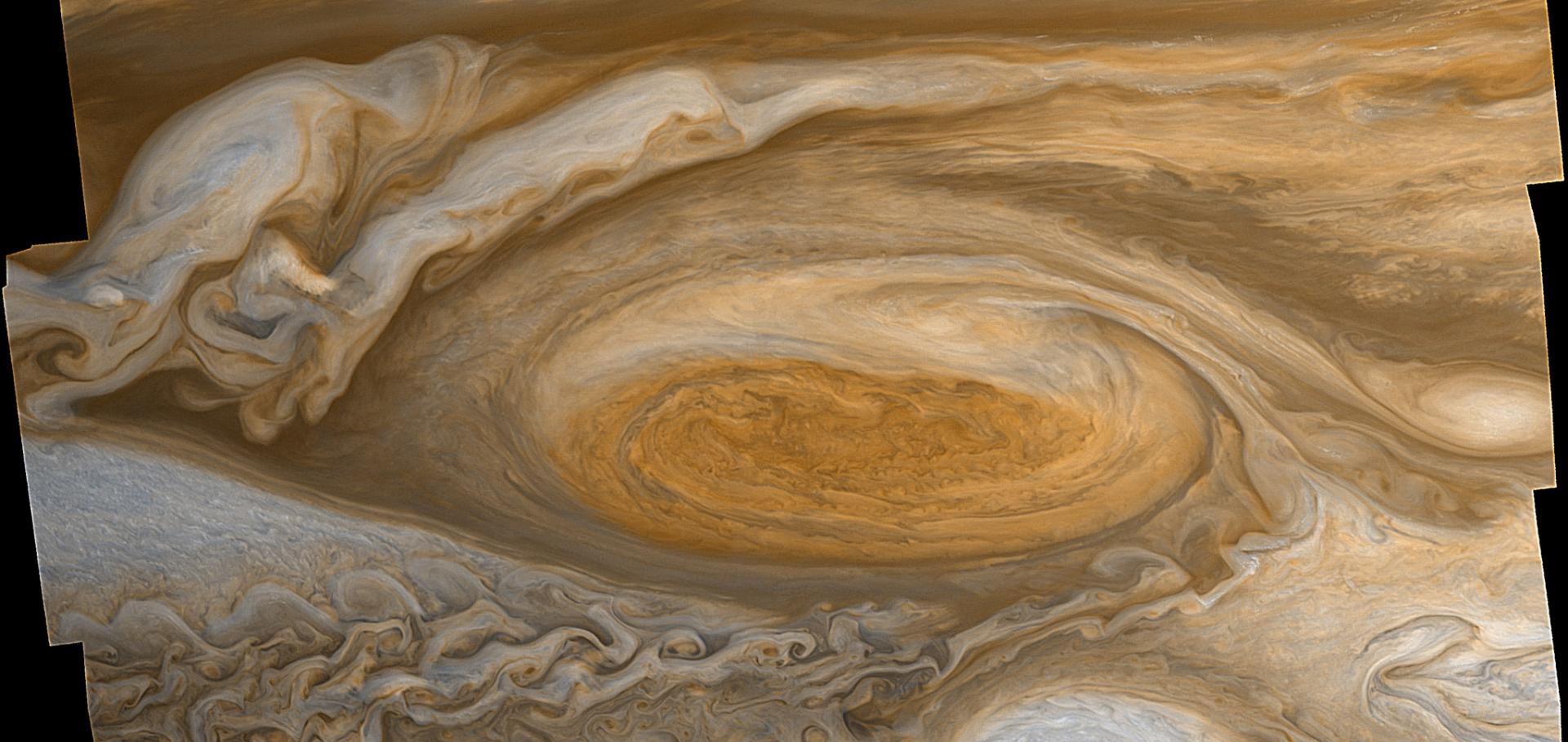The origin and evolution of saturn's 2011-2012 stratospheric vortex
Icarus 221:2 (2012) 560-586
Abstract:
The planet-encircling springtime storm in Saturn's troposphere (December 2010-July 2011, Fletcher, L.N. et al. [2011]. Science 332, 1413-1414; Sánchez-Lavega, A. et al. [2011]. Nature 475, 71-74; Fischer, G. et al. [2011]. Nature 475, 75-77) produced dramatic perturbations to stratospheric temperatures, winds and composition at mbar pressures that persisted long after the tropospheric disturbance had abated. Thermal infrared (IR) spectroscopy from the Cassini Composite Infrared Spectrometer (CIRS), supported by ground-based IR imaging from the VISIR instrument on the Very Large Telescope and the MIRSI instrument on NASA's IRTF, is used to track the evolution of a large, hot stratospheric anticyclone between January 2011 and March 2012. The evolutionary sequence can be divided into three phases: (I) the formation and intensification of two distinct warm airmasses near 0.5. mbar between 25 and 35°N (B1 and B2) between January-April 2011, moving westward with different zonal velocities, B1 residing directly above the convective tropospheric storm head; (II) the merging of the warm airmasses to form the large single 'stratospheric beacon' near 40°N (B0) between April and June 2011, disassociated from the storm head and at a higher pressure (2 mbar) than the original beacons, a downward shift of 1.4 scale heights (approximately 85. km) post-merger; and (III) the mature phase characterised by slow cooling (0.11. ±. 0.01. K/day) and longitudinal shrinkage of the anticyclone since July 2011. Peak temperatures of 221.6. ±. 1.4. K at 2. mbar were measured on May 5th 2011 immediately after the merger, some 80. K warmer than the quiescent surroundings. From July 2011 to the time of writing, B0 remained as a long-lived stable stratospheric phenomenon at 2. mbar, moving west with a near-constant velocity of 2.70. ±. 0.04. deg/day (-24.5. ±. 0.4. m/s at 40°N relative to System III longitudes). No perturbations to visible clouds and hazes were detected during this period.With no direct tracers of motion in the stratosphere, we use thermal windshear calculations to estimate clockwise peripheral velocities of 200-400m/s at 2mbar around B0. The peripheral velocities of the two original airmasses were smaller (70-140m/s). In August 2011, the size of the vortex as defined by the peripheral collar was 65° longitude (50,000km in diameter) and 25° latitude. Stratospheric acetylene (C 2H 2) was uniformly enhanced by a factor of three within the vortex, whereas ethane (C 2H 6) remained unaffected. The passage of B0 generated a new band of warm stratospheric emission at 0.5mbar at its northern edge, and there are hints of warm stratospheric structures associated with the beacons at higher altitudes (p<0.1mbar) than can be reliably observed by CIRS nadir spectroscopy. Analysis of the zonal windshear suggests that Rossby wave perturbations from the convective storm could have propagated vertically into the stratosphere at this point in Saturn's seasonal cycle, one possible source of energy for the formation of these stratospheric anticyclones. © 2012 Elsevier Inc.Assimilating and Modeling Dust Transport in the Martian Climate System
Proceedings of the International Astronomical Union Cambridge University Press (CUP) 8:S293 (2012) 326-328
Diversity of Planetary Atmospheric Circulations and Climates in a Simplified General Circulation Model
Proceedings of the International Astronomical Union Cambridge University Press (CUP) 8:S293 (2012) 297-302
Future Mars geophysical observatories for understanding its internal structure, rotation, and evolution
Planetary and Space Science Elsevier 68:1 (2012) 123-145
Phase synchronization between stratospheric and tropospheric quasi-biennial and semi-annual oscillations
Quarterly Journal of the Royal Meteorological Society 138:666 (2012) 1338-1349


